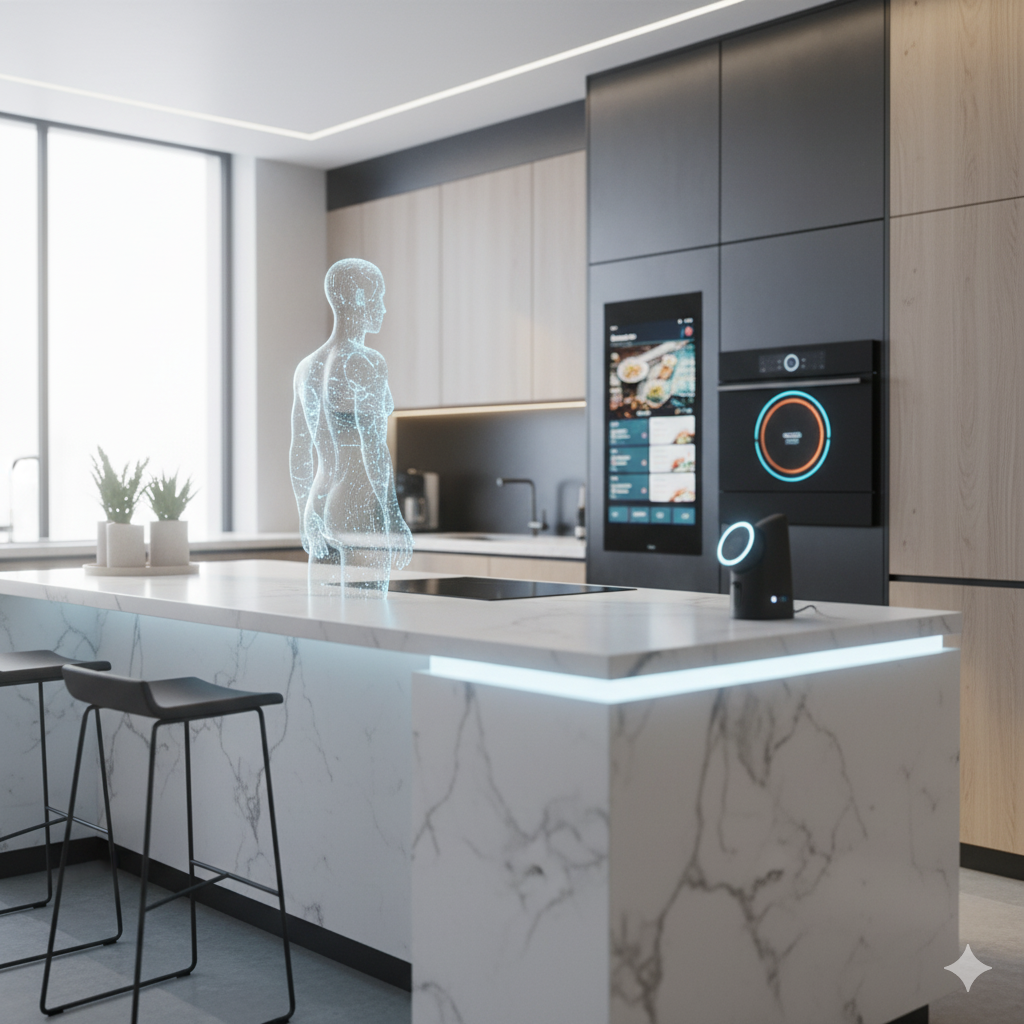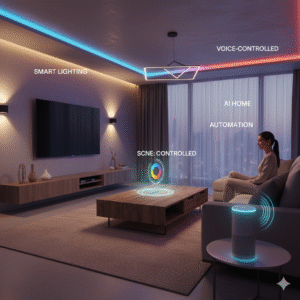Spatial Audio & Next-Gen Earbuds — going beyond noise-cancellation.
1. Introduction: Why Spatial Audio Matters
Earbuds have come a long way. While in the past the main differentiators were design, battery life, or how good the noise cancellation was, in 2025 spatial audio has become a major frontier. The shift is toward not just silencing the world, but immersing you in sound: making it feel like the music, movie, or game is all around you, reacting to your head, your environment, giving more realism.
As streaming, gaming, AR/VR, and immersive media become more widespread, users expect earbuds that deliver more than flat stereo: they want 3D sound, accurate positioning, clarity, and features beyond just cancelling background noise. This article explores that evolution.
2. What is Spatial Audio & How It Differs From Mono/Stereo & Noise Cancellation
2.1 Mono vs. Stereo vs. Spatial / 3D Audio
- Mono audio: single channel, same signal to both ears. No directionality.
- Stereo audio: two channels (left/right) to create a sense of width, some separation. Good for music, basic media.
- Spatial / 3D audio: more advanced. Includes cues for direction (azimuth, elevation), distance, sometimes reflections and reverberation. Head tracking may let the audio scene update as you move.
Spatial audio gives a “soundstage” so sounds feel like they are coming from in front, behind, above, or around. It’s common in home theaters, but now modern earbuds are bringing it to personal listening.
2.2 Active Noise Cancellation vs Spatial Audio
- Noise cancellation (ANC) is designed to block or reduce unwanted external sounds (traffic, chatter) by using microphones and producing “anti-noise.” It improves clarity by reducing interference.
- But spatial audio is different. It doesn’t suppress noise (though many earbuds include both); instead, it enhances the way sound is rendered to your ears so the spatial placement, immersive field, and realism of the audio improve.
Thus, while noise cancellation improves clarity by removing unwanted sound, spatial audio works on how the desired sound is presented: positioning, ambience, direction, etc.
3. Key Technologies Enabling Spatial Audio in Earbuds
To make spatial audio work well in earbuds, several technologies must work together.
3.1 HRTF (Head-Related Transfer Function)
- HRTFs model how your head, ears, torso filter sounds coming from different directions. For example, sound coming from above will be altered differently than sound from the front.
- Some earbuds or systems use generic HRTFs, others attempt personalization (custom-measured per user). Personalized HRTFs tend to give much more accurate spatialization, though they are more complex to implement or require setup.
3.2 Head Tracking / Motion Sensors
- To maintain realism when you move, spatial audio often uses accelerometers, gyroscopes, and/or magnetometers to track head orientation. If you turn your head, audio direction adjusts so it still feels like sound coming from an object in space.
- Many earbuds, especially those tied into Apple’s ecosystem (AirPods Pro etc.), support head tracking for spatial audio.
3.3 High-Quality Drivers & Acoustic Design
- Drivers that can produce accurate high, mid, low frequencies with minimal distortion. Also enough dynamic range to handle quiet ambient cues and loud signals.
- Balanced armature + dynamic driver combinations (hybrid) are sometimes used to improve clarity across frequencies.
- Proper acoustic housing and tuning to reduce distortions, ensure phase coherence.
3.4 Codecs & Wireless Transmission
- To preserve spatial audio and channel information, wireless codecs must support high throughput, low latency, and minimal compression artifacts.
- Bluetooth LE Audio and newer wireless audio standards help here. Proprietary spatial/3D audio formats (Dolby Atmos for headphones, Sony 360 Reality Audio, etc.) also play a role.
3.5 Processing Power & DSP (Digital Signal Processing)
- Spatialization requires real-time signal processing: managing filters, delays, reflections, head tracking data, etc.
- DSP chips inside earbuds or connected devices (phone/streaming box) must handle this without causing perceptible latency or high power drain.
4. Beyond Noise Cancellation: Other Next-Gen Features
Earbuds in 2025 are adding more advanced and “smart” capabilities beyond just ANC or spatial sound.
4.1 Adaptive / Environmental Spatial Audio
- Spatial audio that adapts based on environment: concert hall, open outdoors, small room, etc. Changes reflections, reverb, delay as per space.
- Some devices or apps simulate room acoustics or provide “soundscapes” to enhance immersion.
4.2 Multi-Source Spatial / Mixed Reality Integration
- In AR/VR applications, you might have spatial audio from virtual sources integrated with real sound. Earbuds that integrate with phone/AR headset/mixed reality devices amplify immersion.
- Example: content (game, VR movie) with location-based audio cues that align with visual content.
4.3 Intelligent & Personalized Spatial Audio
- Personalized sound profiles: matching ear shape, hearing sensitivity.
- Adaptive EQ to compensate for listener’s hearing drop-offs in certain frequencies.
- Features such as “dialog clarity”, “localization correction” (if localization is off for some users, adjustments are made).
4.4 Other Smart Features
- Transparency modes / ambient passthrough: so you hear outside when needed.
- Voice assistant integration, touch/gesture controls, auto pause/auto switch.
- Health features: hearing protection, sound exposure limits (warning if sustained loud volumes), possibly integration with fitness tracking.
- Better battery life: some earbuds balance features to conserve power when spatial audio isn’t needed.
4.5 Open Standards & Format Compatibility
- Multiple spatial audio formats: Dolby Atmos, Sony 360 Reality Audio, MPEG-H, DTS:X, and emerging open formats.
- Wider playback and content support so users can use spatial audio across streaming services, games, podcasts etc.
- Emerging new formats: e.g. Samsung & Google’s new spatial audio format “Eclipsa Audio” (mentioned in a news report) to compete and provide more open frameworks. The Verge
5. Challenges & Limitations of Spatial Audio Earbuds
While the promise is high, there are technical, usability, and market challenges.
5.1 Battery Drain & Power Constraints
- Spatial audio with head tracking and processing consumes more power, reducing battery life vs simple stereo playback or passive listening.
- Trade-off between audio quality / spatial fidelity and battery consumption is significant.
5.2 Latency & Sync Issues
- Delays between what you see and what you hear (important for video or gaming) degrade immersion.
- Wireless transmission lag, processing, etc., must be low enough that users don’t notice.
- For video content, lip sync issues can occur if audio lag is nontrivial.
5.3 Ear / Anatomical Variability
- Generic HRTFs may not match everyone. People perceive spatial cues differently based on ear shape, head size, etc. What sounds immersive to one person may feel off to another.
- Customization is still rare or requires special setups.
5.4 Content & Format Support
- Even if earbuds are spatial-audio capable, many songs, podcasts, streams are not produced for spatial sound or head-tracked audio.
- Users may not get full benefit unless their content or app supports spatial audio formats.
5.5 Wireless Codec & Transmission Quality
- Bluetooth and wireless connection quality matters. Packet loss, compression, or limited bandwidth can degrade spatial effects or clarity.
- Different devices and platforms support different codecs; mismatch can hurt experience.
5.6 Cost & Complexity
- High-end spatial audio earbuds tend to be more expensive due to added sensors, better drivers, and more complex hardware.
- Some users may not care enough to pay extra; perceived improvement needs to justify cost.
6. Trends & Innovations in 2025
What’s hot this year, and what features or innovations are gaining traction.
6.1 New Models Embracing Spatial Audio Widely, With Better Rating & Price
- Baseus announced new “Inspire” series earbuds (e.g. Inspire XC1, XP1) with support for Dolby Spatial Audio, high driver quality, and competitive battery life. TechRadar
- OnePlus Bullets Wireless Z3 in India supports 3D spatial audio, Bluetooth 5.4, long battery life & fast charging. The Times of India
6.2 Improved Drivers, Hybrid Architectures
- Dual-driver designs (dynamic + balanced armature) or hybrid acoustic designs are becoming more common to better cover frequency ranges and improve clarity. Baseus XC1 (dual-driver open earbuds) is one example. TechRadar
6.3 Open Audio Formats & Ecosystem Competition
- The arrival of Eclipsa Audio, a spatial audio format from Samsung & Google, aims to provide an alternative to licensed formats like Atmos. Could increase content supporting spatial audio and reduce cost for manufacturers. The Verge
6.4 Wireless Improvements & Bluetooth LE Audio
- Better Bluetooth versions, lower latency protocols, more efficient transmission allowing spatial audio head tracking with less delay.
6.5 Lightweight & Ergonomic Designs
- Manufacturers are paying more attention to form factor: lighter weights, better fits, more comfortable for long listening sessions.
- Compact driver housings, better sealing or fit but still with head tracking sensors.
6.6 Integration with Smart Features & AI
- Earbuds that adapt in real time: adjusting spatialization according to content type (music vs movie), environment noise, user hearing profile.
- Using AI to enhance clarity, suppress unwanted background sound while preserving spatial cues, enhance speech clarity.
7. Top Earbuds & Models Leading the Way
Here are some earbuds and audio products (as of 2025) that are pushing the envelope in spatial audio / next-gen features.
| Model / Series | Spatial Audio / Audio Features | Other Strengths | Trade-Offs |
|---|---|---|---|
| Baseus Inspire XC1 / XP1 | Dual driver or tuned drivers; support for Dolby Spatial Audio; open-ear (XC1) design in some cases. TechRadar | Good battery life; aggressive pricing; “Sound by Bose” tuning. TechRadar | Open-ear designs often lose some bass / isolation; spatial audio may be less effective in very noisy environments. |
| OnePlus Bullets Wireless Z3 | 3D Spatial Audio; Bluetooth 5.4; good for general users. The Times of India | Solid battery life; fast charging; integration with OnePlus ecosystem. | May not match premium models in driver fidelity; app / firmware support may vary depending on region. |
| Technics EAH-AZ100 | Spatial Audio & high-res audio support; better drivers (ferro-fluid etc.); Bluetooth LE Audio support. WIRED | Premium sound quality; good hardware components; brand reputation. | Higher cost; noise cancellation possibly not top in class; fit / comfort dependent on ear shape. |
These are examples; many other brands are also iterating. The trend is that spatial audio is becoming a standard “nice to have,” rather than a premium gimmick, for many high and mid range earbuds.
8. User Experience & Use Cases
Understanding when spatial audio is truly beneficial, and how users are using these features.
8.1 Media & Content Consumption
- Movies, TV shows, streaming services: spatial audio enhances immersion, especially for scenes with ambient sounds, directionality (rain, cars, voices from different directions).
- Gaming: positional cues are vital in games for competitive scenarios (hearing footsteps, directional cues). Spatial audio with head tracking improves awareness.
- Music especially in genres with wide staging (classical, live, acoustic) can be enhanced but also sometimes over-processed depending on mixing.
8.2 Virtual Reality / Augmented Reality Applications
- In VR, sound must match visuals: spatial audio is essential to immersion.
- In AR, spatial audio helps integrate virtual objects into real world audio scene (e.g. virtual assistant voice from a direction, ambient virtual sounds overlaid).
8.3 Communication & Conferencing
- Spatial audio for calls can help distinguish multiple speakers in a group, giving spatial separation to voices.
- Enhances clarity especially in noisy or multi-participant calls.
8.4 Fitness, Outdoors & Mobility
- For listening outdoors (walking, biking), spatial audio can give awareness of environment (sounds outside ear plus spatial enhancement). However sometimes spatial audio with head tracking may cause slight delays; also isolation vs safety balance important.
8.5 Accessibility
- For people with hearing differences, spatial audio can help compensate by boosting certain directions or enhancing clarity.
- Audio cues (directional) can assist navigation, alertness, etc.
9. What to Look for When Buying Next-Gen Earbuds
If you are considering purchasing spatial-audio capable earbuds (or developing them), here’s a checklist of what features and specs matter.
| Feature | Why It Matters | Good Benchmarks or Questions to Ask |
|---|---|---|
| Spatial Audio Support + Head Tracking | Without head tracking, spatial audio is less immersive. | Check if device supports dynamic spatial audio (moves with head), fixed vs moving; whether it supports formats like Atmos, Sony 360 RA etc. |
| Driver Quality & Acoustic Design | Better drivers = more accurate frequency response (bass, mids, highs). | Hybrid drivers; balanced armature + dynamic drivers; good reviews of clarity, bass, distortion. |
| Wireless Codec & Latency | To reduce lag and preserve quality over Bluetooth. | Look for aptX Lossless, LDAC, Bluetooth LE Audio, or equivalent; latency under certain ms; sync for video. |
| Battery Life & Charging Case | Spatial features consume more battery; case helps extend usage. | Minimum 5-8 hours with spatial audio on; long case time; fast charging; USB-C or wireless charging. |
| Comfort & Fit | Poor fit loses seal, reduces isolation and performance; also affects use for extended sessions. | Multiple ear tips; good ergonomics; lightweight; secure fit; good insulation or sealing. |
| Noise Cancellation / Ambient / Transparency Modes | Even with spatial audio, you sometimes need external sound; safety and usability. | Effective ANC, transparency mode; ability to disable / adjust spatial audio; app controls. |
| App / Firmware Support & Updatability | Spatial audio features often depend on firmware and app; better manufacturers will update. | Check manufacturer history; ability to tweak spatial settings; EQ. |
| Content / Format Compatibility | If your music/video/games support spatial audio, you’ll use the feature more. | Check streaming service support (Apple Music Atmos, Netflix, Amazon Prime, YouTube spatial etc.); platform compatibility (iOS, Android, PC). |
| Price vs Value | Spatial audio tends to add cost; ensure you get audible improvements. | Compare to other models; read reviews focusing on spatial performance, latency, battery trade-offs. |
10. Future Outlook: What’s Coming Next
Where spatial audio & next-gen earbuds seem headed in coming years.
- More personalization: auto-measured HRTFs, maybe via scanning ear shape or using phone cameras to build custom profiles.
- Better wireless protocols to reduce latency and increase fidelity (Bluetooth LE Audio, UWB, etc.).
- More content creators producing spatial audio material, more compatibility in streaming services, games, VR/AR experiences.
- Better hybrid earbuds that balance listeners’ needs: spatial audio + long battery + lightweight build + good ANC all in one.
- Possibly spatial audio styles that adapt automatically: where device senses ambient noise, type of content, and adjusts spatialization dynamically.
- Improvements in computational audio: using AI to upmix stereo to spatial, smarter DSPs, better echo and reverb simulation in real time.
- Costs will decrease; what is premium now may become more middle-tier as adoption increases.
11. Conclusion
Spatial audio and next-generation features in earbuds represent a major evolution beyond noise cancellation. As we demand more immersive, realistic audio—whether for music, movies, gaming or AR/VR—earbuds must deliver on directionality, clarity, responsiveness, and comfort.
In 2025, many devices are rising to the challenge: better drivers, head tracking, new open spatial audio formats, efficient wireless protocols, etc. But trade-offs remain: battery life, latency, fit, content availability. For those who care about rich audio experiences, investing in spatial audio earbuds can bring noticeable improvements—especially when you choose models with good spatial support, strong hardware, and firmware/app updates.
Whether you’re an audiophile, gamer, content creator or just want richer sound in everyday life, spatial audio adds depth, immersion, and enjoyment that goes well beyond simply blocking noise. As technology continues to improve, this will become more of a standard than a luxury.
Share this content:













Post Comment